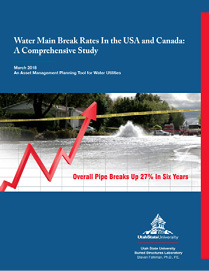Fire researchers point to a simple solution for reducing fire hazards: Eliminate flammable materials. If it doesn’t burn, they say, then there won’t be a fire.
In more practical terms for the modern built environment, a new National Institute of Standards and Technology roadmap presents a strategy to reduce the thousands of deaths and injuries and billions of dollars in damage resulting from the more than a million fires each year in the United States. Authors offer guidelines for developing science-based approaches to solving numerous fire problems for multiple materials, from upholstered furniture to lightweight automobile composites to cross-laminated timbers, and prioritize the most critical and urgent fire hazards to which they can be applied.
“Our hope is that this roadmap will help the global fire community develop research strategies and implementation plans for addressing fire and materials problems, now and in the future,” says co-author and NIST Materials Research Engineer Rick Davis. “The roadmap describes the major challenges associated with these problems and then details potential solutions so that users such as designers and manufacturers can continue to create safer materials that still yield quality products with high consumer satisfaction and market profitability.”
The document resulted from a recent NIST-led workshop that brought together key national and international stakeholders from industry, government, academia and public laboratories. Participants focused their discussions on four areas in which fire hazards are major concerns: Innovative construction materials such as the growing use of cross-laminated wood for tall buildings; advanced polymers and composites such as polyester fabrics used in furniture; lightweight composites used in automobile bodies; next-generation fire retardants, with an emphasis on those that suppress combustion without being health hazards; plus, transportation and infrastructure vulnerabilities such as fire risks on trains.
For each area, the experts considered the direction of current research & development and how it may impact future fire hazard reduction goals such as developing new materials, establishing product flammability standards and advancing computational tools. They also addressed emerging technologies and practices like the increasing use of high-energy density (lithium-ion) batteries that have been in the news for flammability concerns.
Workshop participants agreed that the highest priority for future scientific studies and development projects in flammability should be assigned to research addressing multiple hazards across a wide range of materials and applications:
- Real fire behaviors: To understand how the actual use of a product impacts its fire service-life (the fire resistance over the life of a product) and burning behavior;
- Engineered fire-safe products: To enable the development of technologies that yield products compliant with flammability regulations for their entire lifetime; and,
- Bench-scale and computational tools: To develop and use physical testing methods and computer modeling systems that accurately predict a material’s real-life fire behavior.
 |
| NIST firefighters Justin Grossnickle and Martin Neal examine the results of a test to demonstrate the impact of fire on cross-laminated timber building assemblies. The agency’s new roadmap identifies CLT as a construction material needing more flammability research. Along with the workshop report, more information on NIST’s efforts to reduce flammability is posted at www.nist.gov/el/fire-research-division. PHOTO: National Institute of Standards and Technology |
The NIST roadmap strongly recommends that these research approaches be applied to the five most critical and urgent fire hazards as defined by the experts at the workshop: Residential upholstered furniture; residential buildings in Wildland Urban Interface communities; timber used for multistory buildings; passenger railway cars; and, insulation applied to high-rise building exteriors.
“Workshop participants determined that these application areas should be prioritized for R&D because reducing flammability in all five should significantly reduce the overall losses from fires in the future,” Davis observes. Roadmap benefits, he adds, could eventually be greater than just getting low-fire-hazard products to market: “It’s our hope that the research resulting from the roadmap will lead to science-based quality control measures, testing procedures and performance standards for materials flammability, which in turn should reduce the costs of making products; simplify regulatory compliance for manufacturers; and, provide consumers with more fire-safe product choices.”
Beyond engaging with its partners to promote and urge roadmap acceptance and use, NIST has already begun putting the document to work. “Based on extensive discussions with our in-house experts after considering the roadmap’s guidelines, we are planning changes in our upcoming year’s research and modifying our long-term strategies,” Davis affirms.
